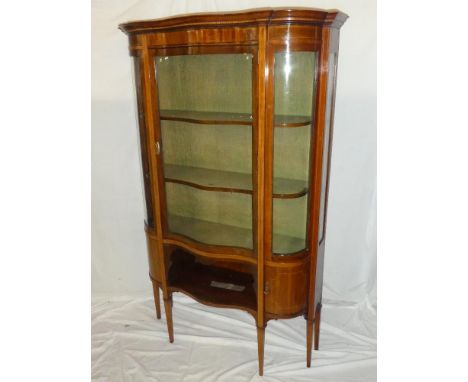We found 104473 price guide item(s) matching your search
There are 104473 lots that match your search criteria. Subscribe now to get instant access to the full price guide service.
Click here to subscribe- List
- Grid
-
104473 item(s)/page
18th CENTURY PROVENANCE ROMAN LEAD "PIG" / INGOT YORKSHIRE, UNITED KINGDOM, 81 A.D. cast lead, of rectangular form, with a raised inscription which reads: 'IMPERATORE CAESARE DOMITIANO AUGUSTO CONSULE SEPTIMUM’ referring to the Emperor Domitian's seventh consulate, inscribed on one side with the word: ‘BRIG’ indicating the ingot was produced in the territory of the Brigantes tribe(58.5 x 10.5 x 13.5cm, weight approximately 69.8kg)Footnote: Provenance: Sir Thomas Ingilby Baronet, Ripley Castle, North Yorkshire. The piece is accompanied by a copy of a document dated to 1768 saying that this ingot and another similar one were discovered c. 1731 in a peat bog on Hayshaw Moor, near Greenho' Hill, close to Pately Bridge, North Yorkshire. The item was subsequently recorded in the Ripley Castle Guidebook as having been kept on a radiator shelf. It has been documented since its discovery in various inventories, including the inventory of the effects of Sir Henry Day Ingilby, dated 29th April 1890. The other ingot discovered alongside this piece was bequeathed to the British Museum in 1772, where it still resides (accession no. 1772.9-11.1). Bonhams, London, Antiquities, 26 th April 2007, lot 303, sold for £36,000 including premium. Note: The inscription on this ingot allows us to date it quite precisely, it records the Emperor Domitian’s seventh consulate, placing the making of this lead ingot to the latter part of 81 AD. The word ‘BRIG’ indicates it was produced in the territory of the Brigantes, a tribe that was settled across much of modern-day northern England. This would fit well given the ingots discovery location near Pateley Bridge and its proximity to the ancient lead mines at Wharfedale. The political situation in Britain at the time was highly volatile. The Brigantes were riven by a split between the pro and anti-Roman factions. Following the chaos of the Year of Four Emperors in 69 AD, the pro Roman Queen of the Brigantes, Cartimandua (from the Celtic ‘Sleek Pony’) was deposed by her former husband and leader of the anti-Roman faction, Venutius. The chroniclers are not entirely clear, but it appears large swathes of Britain had to be abandoned by the Romans in the chaos that followed. Clawing back the northern territories they had lost took a number of years, with the Brigantes resorting to their superior knowledge of the hills, forests and valleys, striking at the invading forces with hit and run tactics. In 79 AD the governor Agricola came north with an overwhelming force, pushing through the Brigantes territory into Caledonia, potentially as far north as the Firth of Tay, all the while building forts and forward operating bases. Though this appears to have quietened the situation somewhat, pockets of resistance throughout the Brigantes nominal territory remained for several decades. By 81 AD, at the time this ingot was produced, Agricola was campaigning in the Southern Uplands of modern Scotland and the situation remained fragile. It is therefore likely that the location where this precious material was being mined was heavily guarded and remained at risk of attack. Such was the value of lead to the Romans, they pushed ahead with its production through this volatile period. The mines of ancient Britain were crucial to the Roman Empire. Indeed, the local Celtic tribes had traded raw metals across the continent for millennia and the mineral wealth of Britain had been famous all around the Classical World prior to its invasion by the Emperor Claudius in 43 AD. After the subjugation, British lead was exported all over the Empire, used in the aqueducts and plumbing that allowed Rome to grow its cities and to develop its agriculture. For similar examples of pig ingots, please see; Potter, T.W. 1983. Roman Britain . p.50, figs. 55, 57.
A Franklin Mint 'The Classic Cars of the Fifties' Collection including '57 Corvette, 59 Cadillac, '56 Thunderbird, '53 Buick Skylark, '56 Lincoln Continental, '53 Packard Caribbean, '58 Edsel, '50 Chrysler, '51 Mercury, 55 Chevrolet, '50 Ford & '53 Studebaker, (faults) official binder holding information leaflets about each car and certificates and an original 50's style open shelf unit to display the cars
Frankline Mint including 1/18th scale B11E797 1905 Rolls Royce 10HP - green, gold trim and black seats, inner packaging; a 1907 Rolls Royce Silver Ghost silver with green seats, boxed; a 1911 Rolls Royce Tourer, white body, gold trim, tan cloth roof, boxed; a Franklin Mint Precision Models display shelf (4)
An 18th century oak linen press, the cavetto cornice above two shaped, panelled doors enclosing a shelf, flanked by a reeded canted corner on each side, over one long drawer, the base with a brushing slide over two short and two long graduated drawers with ovolo lip-moulded edges, on shaped bracket feet, 123 x 55 x 196cm high
A Regency rosewood secretaire chiffonier, brass-mounted panelled shelf above, brass inlaid secretaire drawer with fitted interior, and brass lattice cupboards under flanked by turned columns, length 1.1mTop shelf is slightly warped, timber is very slightly faded, there is one small veneer chip on the right-hand edge, otherwise very good condition
-
104473 item(s)/page




























































